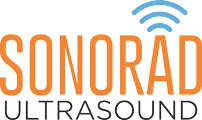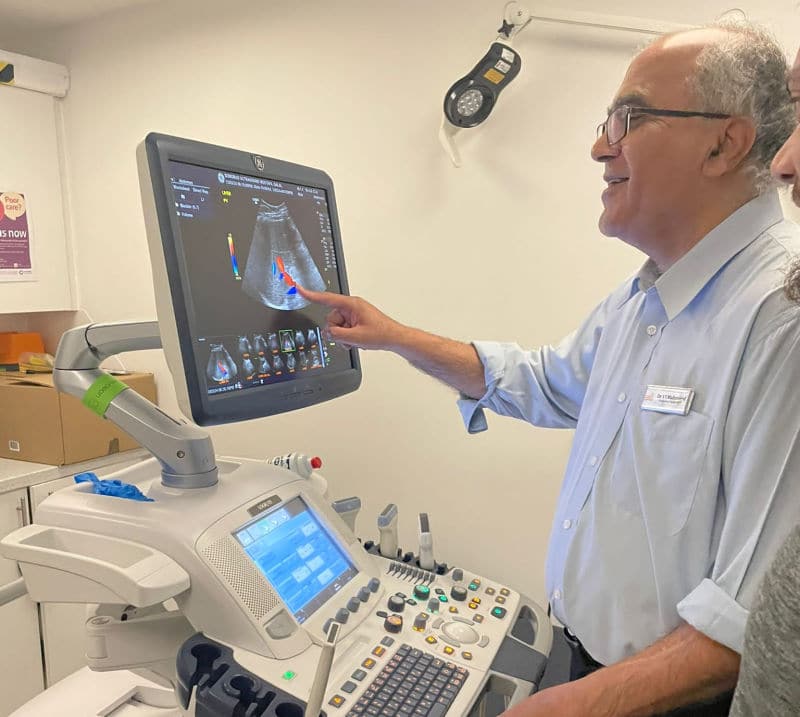Private Muscles & Joints Ultrasound Scan in Slough, Berkshire
Musculoskeletal (MSK) ultrasound is essential in the diagnosis of orthopaedic and sports injuries, as well as chronic conditions such as rheumatoid arthritis. Scans are performed by Specialist Consultant MSK Radiologists.

Muscles and Joints Scans in Slough
Musculoskeletal ultrasound scans can assess the joints for common problems such as arthritis, tendinitis, bursitis, fluid in the joints, carpal tunnel syndrome and more. At our Slough ultrasound clinic, we offer high quality, affordable private ultrasound scans in a friendly, relaxed and professional environment. There is no need for a GP referral.
MSK Ultrasound Scans We Offer
We offer a wide range of private ultrasound scans for MSK. If you can’t find the type of scan you need or are unsure of which type is best for your needs, please get in touch and we will be more than happy to help.
Hand & Wrist
Elbow & Forearm
Shoulder
Hip
Knee
Calf
Ankle
Foot
A message from Dr S I Mahmood
"Do you hesitate or get overwhelmed at the thought of visiting an ultrasound clinic? Perhaps you've had an injury or problem in the past which you haven't been able to get effective treatment for and feel hopeless. At Sonorad, we promise to look after you from the start of the consultation all the way to the very end of your journey with us.
We provide care on an individual basis. We pride ourselves on really listening and taking our time to focus on what's best for you.
You can rest assured that you are in safe hands."
Dr S I Mahmood | Clinical Director Sonorad & Consultant MSK Radiologist
Exceptional Professional Care
Our ultrasound guided injection clinic has a top priority of the welfare of our visitors. Our Specialists actively practice their specialities at leading hospitals in the UK and across the NHS, ensuring you receive the highest level of care. Our team are fully registered and regulated for practice in the United Kingdom. Our patients should expect nothing less.
Safe Injection Procedure
Consultant Doctors
Same-Day Appointments
Expert Quality Care and Advice
FAQs
What is Ultrasound?
Ultrasound imaging is a non-ionising and non-invasive medical test that helps physicians diagnose and treat medical conditions. It is safe and painless. It produces pictures of the inside of the body using sound waves. Ultrasound imaging is also called sonography. It uses a small probe called a transducer and gel placed directly on the skin. High-frequency sound waves travel from the probe through the gel into the body. The probe collects the sounds that bounce back. A computer uses those sound waves to create an image. Ultrasound exams do not use radiation (No x-rays). Because ultrasound captures images in real-time, it can show the structure and motion of the body organs. Thanks to new additions as microflow can detect minor inflammations. Ultrasound images of the musculoskeletal system provide pictures of muscles, tendons, ligaments, joints, nerves and soft tissues throughout the body.
What is Ultrasound Imaging of the Musculoskeletal System?
Ultrasound as an amazing tool has revolutionised the current Physical and medical practice.
Ultrasound constructs the pictures of the muscles, tendons, ligaments, nerves and joints (small or big ) throughout the body. It’s helpful in diagnosing sports injuries, sprains, strains, muscle tears, trapped nerves, arthritis and rheumatology conditions.
Ultrasound does not use X radiation and is considered the safest, non-invasive modality for musculoskeletal problems, whether these are sports/ work, or age-related.
What are some common uses of ultrasound for the Musculoskeletal System?
Ultrasound images are typically used to help diagnose:
- Shoulder: Tendon tears or inflammation/ tendinitis of the rotator cuff in the shoulder. Calcific tendinitis.
- Elbow - Tennis elbow, Golfer’s elbow- inflammation of the tendons, bursitis, muscle and tendon tears.
- Wrist and Hand: Wrist and hand tendons and tendon sheaths to diagnose tenosynovitis as De Quervain tenosynovitis, Ganglion cysts and small joint arthritis. Flexor, extensor Finger tendon tears and trigger finger Helps to identify Carpal tunnel syndrome-related structural abnormalities.
- Hip: Trochanteric bursitis, Tendinosis and joint effusion including arthritis. Sportsman hernia, Groin pain.
- Knee: Knee tendons as rupture or inflammation. Joint effusion, Ligament tears and arthritis.
- Ankle: Achilles tendon tear/ inflammation, Tennis leg and other tendon in the ankle. Tenosynovitis of ankle and foot tendons.
- Foot: Plantar Fasciitis, Morton’s neuroma, bursitis or metatarsalgia.
- Muscle tears, masses, or fluid collections.
- Ligament sprains or tears.
- Early changes of rheumatoid arthritis.
- Nerve entrapments such as carpal tunnel syndrome or ulnar neuritis.
- Benign and malignant soft tissue tumours.
- Ganglion cysts.
- Hernias ( Abdominal, inguinal and muscle hernias).
- Foreign bodies in the soft tissues (such as splinters or glass).
- Soft tissue masses (lumps/bumps).
What are the advantages of ultrasound guided injection?
There is a significant body of research which demonstrates that ultrasound guided injections give better outcomes such as improved levels of pain relief, longer lasting benefits, and improve the post-injection function of the injected area, compared with injections that are done without ultrasound guidance ( e.g.blind/surface marked injections).
There is also growing evidence that guiding the injection reduces the risk of trauma to local tissues or misplacement of the needle and/or the injection substance. This improves the safety of the injection and reduces the risk of adverse events associated with injection therapy. Because the location of the injection is more precisely known it reduces the chances of having unnecessary injections.
Many patients find ultrasound guided injections to be more comfortable as often the required depth of the injection can be reduced
What are the benefits of diagnostic ultrasound?
- Ultrasound scanning is non-invasive and painless (no needles or injections).
- Ultrasound imaging is extremely safe and does not use X- radiation.
- Occasionally, an ultrasound exam may be temporarily uncomfortable, but it should not be painful.
- Ultrasound is widely available, easy to use, and less expensive than most other imaging methods.
- Ultrasound scanning gives a clear picture of soft tissues that do not show up well on x-ray images.
- Ultrasound provides real-time imaging. This makes it a good tool for guiding minimally invasive procedures such as needle biopsies, fluid aspiration, treatment of tendon inflammations.
- Patients with certain cardiac pacemakers and metallic implants or fragments in the body often cannot be safely exposed to the strong magnetic field of magnetic resonance imaging (MRI); however, patients can safely receive ultrasound imaging.
- Ultrasound is also an excellent alternative to MRI for claustrophobic patients.
- Compared to MRI, ultrasound may provide greater internal detail when assessing soft tissue structures such as tendons and nerves.
- Unique ability to capture real time images gives ultrasound an edge to see the dynamic movement of tendon, joint or an extremity.
- Ultrasound imaging is faster than MRI and does not require the patient to remain completely still, allowing infants to be imaged without sedation.
Which body parts are you able to treat with ultrasound guided injections?
Steroid injection can be very effective for treating a number of musculoskeletal pain conditions. For a more comprehensive list please see below.
Common injections include:
Shoulder: frozen shoulder, Subacromial bursitis, Tendon swelling/inflammation, Calcific Tendinitis, Barbotage for calcific tendinitis.
Elbow:
• Lateral epicondylitis commonly known as Tennis elbow – ultrasound guided dry needling and steroid injection.
• Medial epicondylitis known as Golfer’s elbow – Dry needling and or cortisone injection for pain relief.
• Aspiration and injection for the olecranon bursitis.
• Ulnar nerve neuritis – injections to reduce inflammation and pain.
Wrist and Hand:
• Carpal tunnel syndrome ultrasound guided injection
• Ganglion cyst aspiration and injection.
• Tendon sheath inflammation injection.
• De Quervain tenosynovitis.
• Pain relief injection for rheumatoid arthritis
• Trigger finger treatment injection
• Small joint arthritis cortisone injection’
Hip:
• Pain relief in hip Osteoarthritis in particular the patients waiting for replacement.
• Trochanteric bursitis
• Iliopsoas bursitis
• Tendon inflammation and tendinosis
• Hamstring tendinopathy
• Ultrasound guided treatment Injection for Meralgia parasthetica pain relief
Knee:
• Therapeutic and pain relief cortisone injections
• Pain relief in Knee osteoarthritis
• Cortisone injection for pes anserinus
• Baker’s cyst aspiration and injection.
• Joint fluid aspiration
• Hyaluronic Acid injections
Ankle:
• Ankle osteoarthritis pain relief
• Subtalar Injection
• Joint fluid aspiration
• Tendinopathies
• Inflammation of the tendon or tendon sheath
• Achilles tendon inflammation (we do not inject steroid in the insertional tendinosis)
• High volume stripping procedure in chronic Achilles tendinosis and occasionally in insertional tendinosis.
Foot:
• Plantar fasciitis
• Morton’s Neuroma
• Metatarsalgia
• Small joint injections
• Tendon sheath inflammation
• Rheumatoid arthritis injection for pain relief
• Ganglion cyst aspiration and injection
What are Corticosteroid “steroid” Injections?
Steroid Injections commonly known as corticosteroid injections are used to reduce pain and the inflammation of the tendons, tendon sheaths, joint pain, and arthritis and during the treatment of ganglion cysts. These are only administered by qualified and trained healthcare professionals. Ultrasound provides the best guidance to instil the injection at the target point.
How many injections am I allowed to have?
We recommended no more than 2 injections to the hip, knee and ankle joints in the space of 12 months and no more than 3 injections per year in other parts of the body. Corticosteroids are well tolerated by the body and do not cause the typical side effects commonly associated with taking oral steroids or anabolic steroids.
How quickly will the steroid injections work?
This will depend upon the type of steroid used. The shorter-acting soluble steroids begin to give relief within a couple of hours. The longer-acting steroids may take up to a couple of weeks to become effective.
How long will the ultrasound guided corticosteroid injections last?
This will depend upon a number of factors including the nature and severity of the problem for which you are having the injection. Sometimes there is no improvement but the longer lasting less soluble steroids can be effective for many months. It is important you listen to the advice of your physiotherapist and continue with the exercise programme and make any lifestyle changes he or she recommends.
Do I need a referral for steroid injection?
Patients usually require a referral from their GP or treating clinician. If you do not have a referral letter, you must book a Consultation with a Consultant radiologist. At SONORAD all injections and procedures are performed by consultant radiologist with whom you will have a consultation before the procedures during the same appointment.
Are there side effects of local cortisone injections?
Rarely there may be pain flare or discomfort in which paracetamol may help.
There can be local bruising or skin discolouration at the injection site.
Infection is a rare occurrence and can show as redness, and swelling. On this occasion, you can get medical advice from your GP.
Risks and Limitations?
Standard diagnostic ultrasound has no known harmful effects on humans.
What are the limitations of Ultrasound Imaging of the Musculoskeletal System?
Ultrasound has difficulty penetrating bone and, therefore, can only see the outer surface of bony structures. Yet ultrasound sometimes can detect small fractures of the bone surface. Doctors typically use other imaging modalities such as MRI to visualize the internal structure of bones or certain joints.
There are also limitations to the depth that sound waves can penetrate; therefore, deeper structures in larger patients may sometimes cause difficulty. But thanks to new scanners which have more penetration. SONORAD uses high-end equipment to diagnose as possible as we can.
Can Diabetic patients have steroid injection?
There can be temporary increase in the blood glucose level. Consultant radiologist will discuss with you prior to the injection for precautionary and post-injection management.
What preparation do I need for a Musculoskeletal Ultrasound?
No specific pre-test special preparation is needed. You can leave jewellery at home and wear loose, comfortable clothing. You may be asked to wear a gown.
Do you offer Ultrasound Guided Injections near me?
We operate our clinic from Manor Park Medical Centre, 2 Lerwick Drive, Slough, Berkshire SL1 3XU. Please note we are not part of Manor Park Medical Centre but use the premises.
We have people travel to us from many miles around including Windsor, High Wycombe, Ascot, Marlow, Maidenhead, Oxford and West London.

